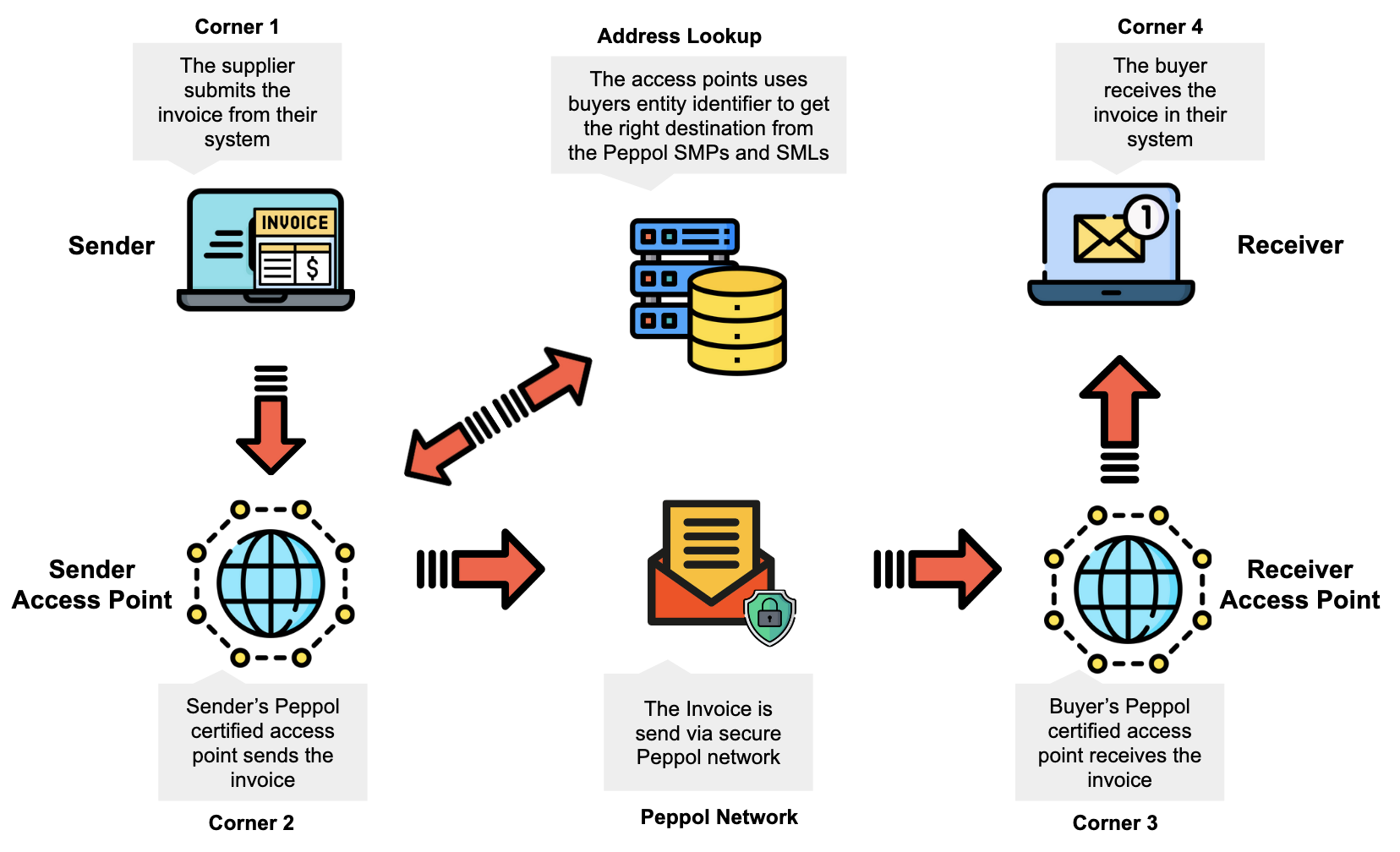Peppol Network
What it is, How to Use it, and Things to Note for e-Invoicing in Europe
Peppol stands for Pan-European Public Procurement On-Line. It is the most widely used e-invoicing network in Europe. Like any other einvoicing networks it facilitates electronic transactions between businesses to businesses and to government agencies. In this article, we’ll take a closer look at Peppol, its uses, and how to sign up and send e-invoices on the network.
What is Peppol?
Peppol is an e-invoicing network that allows businesses to exchange electronic invoices with their trading partners across Europe. It’s based on a standardized set of protocols and data formats that ensure compatibility between different e-invoicing solutions. Peppol is used by both private sector companies and public sector organizations, including government agencies. In fact, the European Union requires that all public sector entities must be able to receive and process e-invoices by April 2022.
Peppol is designed to be an open and interoperable network, which means that businesses can connect to it using a variety of e-invoicing solutions. This makes it easy for businesses to send and receive e-invoices regardless of the e-invoicing software they use. Peppol also supports a range of document types beyond e-invoices, such as purchase orders, order responses, and shipping notifications. These documents include e-Orders, e-Advance Shipping Notes, eInvoices, eCatalogues, Message Level Responses, etc.
How Peppol works?
 Peppol 4 Corner Model
Peppol 4 Corner Model
Uses of Peppol
Peppol can be used for a variety of purposes, including B2B (business-to-business) and B2G (business-to-government) invoicing. In particular, Peppol is commonly used in the public sector, where e-invoicing is mandatory in many countries. Most of the public entities in European Union can reecive invoices via peppol. Peppol is widely gaining poplularity internationally and is accepted in countries outside EU such as Australia and Singapore.
Peppol can also be used for other types of electronic document exchange, such as purchase orders, delivery notes, and catalogues. By using Peppol, businesses can streamline their document exchange processes and reduce manual errors.
You can check the list of countries accepting peppol here
How to Sign Up and Send E-Invoices on Peppol
To use Peppol, businesses must first sign up with a Peppol Access Point Provider (AP). Access points are organizations that provide connectivity and services to the Peppol network. There are many access point providers in Europe, so businesses should choose one that best suits their needs.
Once a business has signed up with an access point provider, they can start sending e-invoices on Peppol. The e-invoices must be in a structured and machine-readable format, such as XML or UBL. To ensure compatibility with Peppol, businesses should use e-invoicing software that supports the Peppol BIS (Business Interoperability Specifications). To send invoices, they’ll need to create an electronic invoice in their e-invoicing software and send it to their trading partner’s Access Point. The Access Point will then forward the invoice to the recipient’s e-invoicing software.
When sending e-invoices on Peppol, businesses will need to include the recipient's Peppol ID, which is a unique identifier that is used to route the invoice to the correct recipient. The Peppol ID is a combination of the recipient's country code, business registration number, and access point ID. Senders can check whether the recipient exists on Peppol network on Peppol directory
Things to Note When Using Peppol
While Peppol offers many benefits, there are some important things to note when using the network. For example, businesses must ensure that their e-invoicing software is compatible with Peppol, and that they have signed up with a Peppol access point provider. Some countries have country specific requirements(Eg: Germany ). Senders are required to adhere to these requirements inorder to successfully send the invoice to the recepient.
Peppol is not a single system, but a collection of interconnected Access Points and Service Metadata Publishers that offer various e-invoicing services to their clients. Access Points are responsible for handling the transmission of electronic documents, while Service Metadata Publishers store information about the location of registered Access Points and other service providers.
Important Websites
| Website | URL |
|---|---|
| Directory of businesses on peppol | Peppol Directory |
| Official list of peppol access points | Peppol access points |
